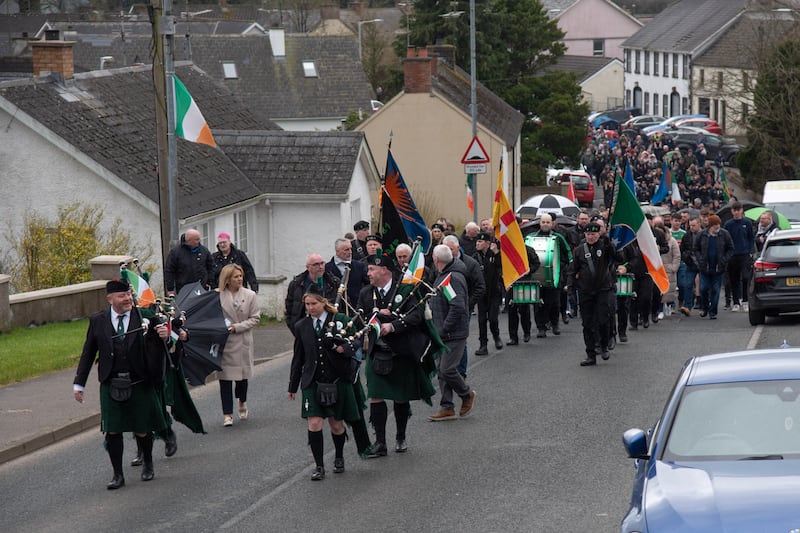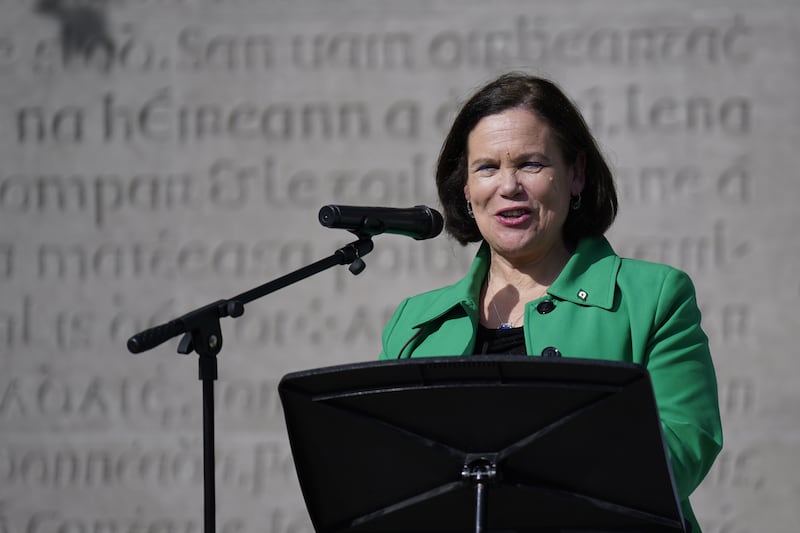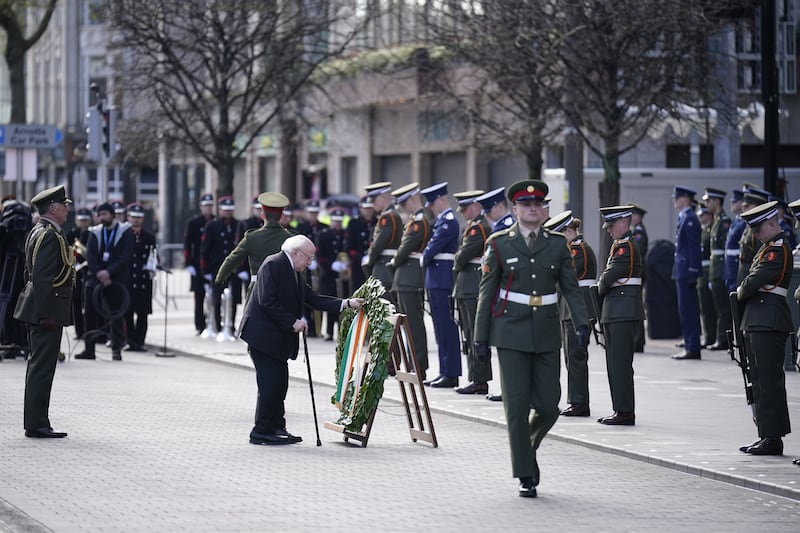IN 1966 the Fianna Fáil government under Sean Lemass confidently assumed that they could control the narration of the Rising in the south and its meaning for the future, and appeared to succeed in so doing. But for Terence O’ Neill in the north, commemoration in conjunction with the tensions of the time proved a tipping point as it provided Ian Paisley with the platform he had long sought.
In the Republic, the Irish government had for three decades found it necessary not to hold any ostentatious Easter Rising commemorations. In 1976 the British ambassador, Christopher Ewart Biggs, had been assassinated in Dublin by the Provisional IRA.
Then, in 2006, the British ambassador sat on the stand outside the GPO with members of the Irish cabinet, while leading members of Sinn Féin and former members of the Provisional IRA stood nearby.
That 90th anniversary, led Bertie Ahern under the combined liberation of the peace process and fears of the electoral challenge posed by Sinn Féin, set a template for this year's centenary commemorations.
Commemoration is not history, and memory is not history. The state desires to control political meaning through controlling public commemoration. Commemoration tells us more about now than about then.
The 19th-century Irish nationalist memorialising and commemorating tradition, formulated out of a succession of reframings of the past to publicly galvanise demands for Irish independence, was itself a key feature of the Irish Republican Brotherhood Rising of April 1916.
Commemorating past generations of republican heroes furnished the revolutionaries of 1916 with genealogy, ideology and historical context. Many had been politicised through the vibrant 1798 centenary commemorations of their youth. In commemorating that Easter event 50 years later in 1966, Irish nationalists reiterated their allegiance to a tradition of unbroken – and for some incomplete – struggle for Irish freedom.
Video courtesy of NI Community Relations Council
In 1976, in the heat of the Northern Ireland conflict, the commemoration had gained new purchase as a means of integrating the then contemporary Provisional IRA campaign and a gamut of Official IRA and breakaway campaigns into narratives of resistance to British state power in Ireland.
The northern republican commemoration of 1916 in 1976 also represented a threat to the independent Irish state, as the various IRAs sought to appropriate and claim as their inheritance ‘republican memory’ in modern Ireland.
The Irish state saw itself as the legitimate inheritor of the republican past, but key actors were intensely wary of the uses to which the then contemporary IRA wished to put what they claimed was their continuity with the Irish revolutionary past.
Commemorating 1916 in 1976 was a very different matter to commemorating 1916 in Belfast or Dublin in 1966. The raising of questions about who owned the Irish flag, and who owned the revolutionary tradition, was far more starkly heightened on the latter occasion. Commemoration acquired new resonances in conflict. They raised questions of legitimacy, mandate and genealogy.
Commemoration in a post-conflict situation is just as likely to be a way of perpetuating and recalibrating divisions as it is likely to lead to reconciliation. Political parties seek to shape commemoration to reflect their image, bolster their electoral prospects and refurbish their political and cultural capital.
We can look at particular points during the Troubles to appreciate how trauma and memory and the utilisation of commemoration at different times worked in the mesh and weave of the conflict. The Northern Ireland Troubles were, and remain in retrospect, at least partially a propaganda war, but they were also wars about meaning, perspective and narration. At the centre of narration was the practice of commemoration.
The tens of thousands who flocked to the streets of west Belfast in 1966 in commemoration of a broad Irish nationalist identification with the 1916 Rising had been replaced by 1976 by a few thousand in a war zone. Helicopters, armoured cars, flaming houses and militarised streets were an ominous setting for a commemoration that allowed factions formerly united in a broad coalition to tear one another apart while using the event to spell out both legitimacy and future intent.
In Dublin the Irish state effectively jettisoned commemorating 1916 and was forced to counter the bid by Provisional Sinn Féin to occupy the space abandoned by the state on O’Connell Street to commemorate the Easter Rising. The 1916 commemoration in Dublin was by 1976 emblematic of how internalised the revisionist critique of the 1966 commemoration then was.
In the penultimate year of the Fine Gael-Labour coalition, the Irish state repudiated the right of Provisional Sinn Féin to control the streets of Dublin. Irish government rage at British negotiations with Sinn Féin found expression in showing the Provisionals that they had no power to control the Irish state.
The commemoration of 1916 in different sites is an anthropological moment – a snapshot on the politics and tensions of a particular time.
But the complex and multi-layered construction of an anti-imperialist Irish nationalism by remarkable individuals in the past also retains its capacity to change politics in the present and history in the future.
- Dr Margaret O’Callaghan is a senior lecturer at the School of Politics, International Studies and Philosophy at Queen’s University Belfast. She is the author with Mary E Daly of 1916 in 1966: Commemorating the Easter Rising.






